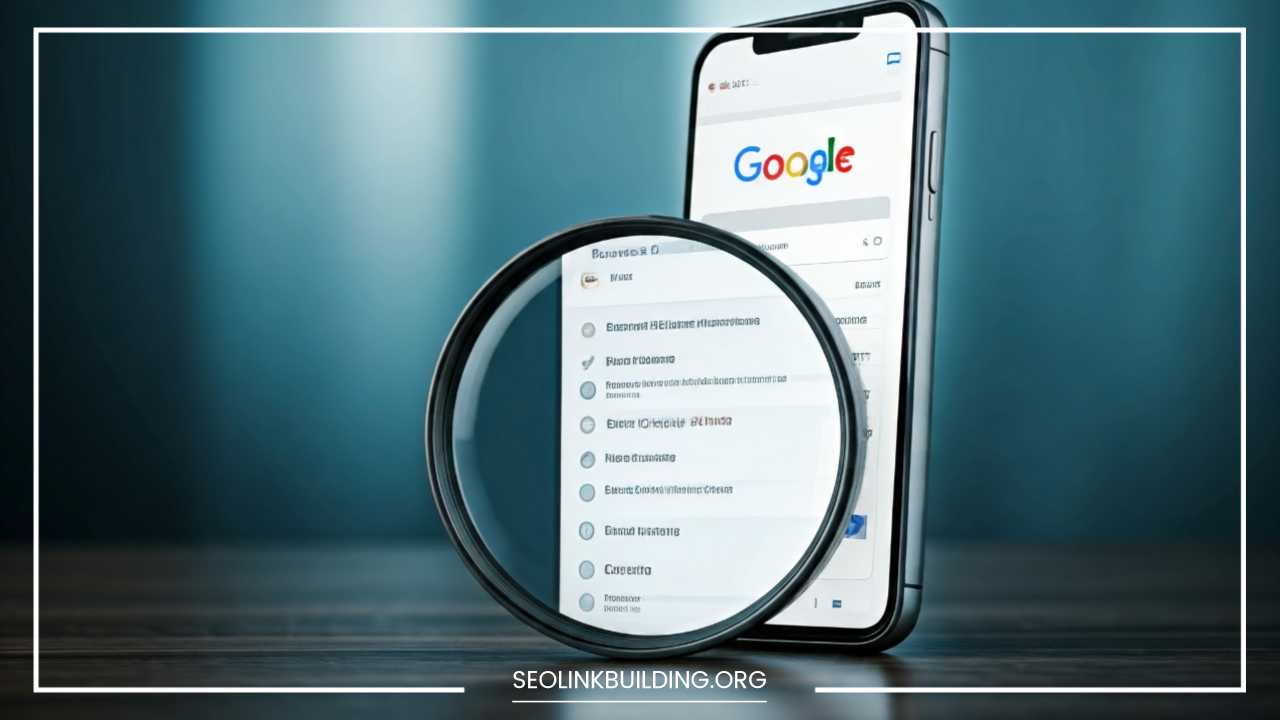How to Optimize Google My Business Listing

Google My Business Listing
How to Optimize Google My Business Listing: A Comprehensive Guide
Google My Business (GMB) is a critical tool for local businesses aiming to increase visibility, attract new customers, and build credibility within their community.
By meticulously optimizing your GMB listing, you not only enhance your search engine ranking but also drive more foot traffic and establish your business as a trusted local authority.
This comprehensive guide will delve deeply into the essential strategies and best practices for optimizing your GMB listing, ensuring that your business stands out in local search results.
1. Claim and Verify Your Listing
Claim Your Listing
The first step in optimizing your GMB listing is to claim it. Claiming your listing provides control over the information displayed about your business. This is crucial for ensuring accuracy and consistency. To claim your listing, follow these steps:
- Search for Your Business: Begin by searching for your business on Google Maps or Google Search. Enter your business name and address to see if it appears in the search results. If it does, click on it.
- Claim This Business: Look for a button or link labeled “Claim this business” or “Own this business?” and click on it. If this option is not visible, it could be because someone else has already claimed it or it has not been listed on Google yet. In this case, you may need to create a new listing.
Verify Your Business
Verification is a crucial step to confirm that you are the legitimate owner of the business. Google offers several methods for verification, depending on your business type and location:
- Postcard Verification: Google will send a postcard containing a verification code to your business address. Once you receive the postcard, log into your GMB account and enter the code to complete the verification process. This is the most common method of verification.
- Phone Verification: For some businesses, Google may offer phone verification. Google will call your business phone number and provide a verification code. Enter this code into your GMB account to verify your listing.
- Email Verification: Google may offer email verification for certain types of businesses. Check your business email for a verification code and enter it into your GMB account.
- Instant Verification: If you have already verified your business with Google Search Console, you might be able to instantly verify your GMB listing. This option is available if Google recognizes your website and its association with your business.
- Video Verification: In some cases, Google may require video verification. You will need to provide a video tour of your business and show proof of ownership. This method is typically used for businesses that have complex or unique verification needs.
2. Complete Your Business Profile
Business Name
Ensure that your business name is listed exactly as it appears on your storefront, website, or any other official documentation.
Consistency in your business name across various platforms helps build credibility and avoid confusion. Using your exact business name as it appears in the real world ensures that customers can easily recognize and find you.
Category
Selecting the right categories is essential for accurate search results. Categories help Google understand what your business offers and match it with relevant searches.
Choose a primary category that best describes your business and secondary categories that highlight additional services or products.
For example, if you operate a bakery, your primary category might be “Bakery,” while secondary categories could include “Coffee Shop” or “Dessert Shop.”
Address
Your address should be accurate and up-to-date to help customers locate your business. If you have a physical storefront, ensure that your address matches the one on your website and other online directories.
For service-area businesses (e.g., plumbers, landscapers), you can specify the areas you serve without displaying a physical address. Ensure that your address is consistent across all online platforms to avoid confusion.
Phone Number
List your primary business phone number so that customers can easily reach you. Ensure that this number is consistent with the one listed on your website and other online directories.
Providing a reliable phone number helps customers contact you for inquiries, bookings, or support.
Website
Include a link to your business website to provide customers with more information about your products or services.
This allows potential customers to visit your website for additional details, view your offerings, and make inquiries. Make sure that the website link is functional and directs users to the correct page.
Hours
Specify your regular business hours, including any special hours for holidays or events. Keeping this information accurate helps customers know when you are open and improves the user experience.
If your hours change frequently, make sure to update them accordingly. Clear and accurate hours prevent potential customers from arriving when you are closed.
Attributes
Attributes provide additional details about your business that can influence customer decisions. Choose relevant attributes that describe features or amenities such as “Wi-Fi,” “Wheelchair accessible,” “Accepts reservations,” or “Pet-friendly.”
Attributes help customers understand what to expect when visiting your business and can set you apart from competitors.
3. Optimize Your Business Description
Keyword-Rich
Incorporate relevant keywords into your business description to improve your visibility in search results. Think about the terms potential customers might use when searching for your products or services.
For instance, if you run a local gym, include keywords like “fitness center,” “personal training,” or “group classes.” Avoid keyword stuffing; instead, integrate keywords naturally into a compelling narrative.
Informative
Provide a clear and concise description of your business. Highlight your products, services, and what sets you apart from competitors.
For example, if you own a bakery, describe the types of baked goods you offer, any unique ingredients or baking techniques you use, and any special promotions.
Ensure that the description provides valuable information that helps potential customers understand what your business offers.
Engaging
Craft a compelling description that captures the essence of your business and encourages customers to visit. Use a friendly and engaging tone to make your business more relatable.
A well-written description not only informs but also motivates potential customers to choose your business. Focus on what makes your business unique and why customers should choose you over competitors.
4. Add High-Quality Photos
Exterior and Interior Shots
High-quality photos of your business’s exterior and interior create a visual representation of what customers can expect when they visit.
Exterior photos help customers locate your business, while interior shots give them a glimpse of the ambiance and environment. Invest in professional photography if possible to ensure that the images are of high quality.
Product and Service Photos
Showcase your products or services with high-resolution photos. For example, if you run a restaurant, include images of your most popular dishes.
If you offer services, such as home cleaning, post photos of your team in action or before-and-after shots of completed projects.
High-quality product and service photos can attract potential customers and provide a clearer understanding of what you offer.
Team Photos
Introducing your staff through photos can create a personal connection with potential customers. Include images of your team members in their work environment, smiling and engaging with customers.
This helps humanize your business and build trust. Showcasing your team also gives potential customers a sense of the people they will interact with.
Customer Photos
Encourage satisfied customers to share their photos and feature them on your GMB listing. Customer photos add authenticity and social proof, making your business more appealing to potential clients.
If customers post photos on their own social media accounts, consider asking for permission to share these images on your GMB listing.
Customer photos can enhance credibility and showcase real-life experiences with your business.
5. Encourage Customer Reviews
Prompt Customers
After providing excellent service or completing a transaction, ask customers to leave reviews. You can request reviews in person, via email, or through follow-up messages.
Making it easy for customers to leave feedback can significantly increase the number of reviews you receive. Provide clear instructions on how to leave a review, and consider offering incentives such as discounts or freebies to encourage participation.
Respond to Reviews
Engage with customers by responding to their reviews, both positive and negative. Thank customers for their positive feedback and address any concerns raised in negative reviews.
Your responses show that you value customer feedback and are committed to improving their experience. Responding to reviews also demonstrates professionalism and can help mitigate the impact of negative reviews.
Address Negative Reviews
Handle negative reviews professionally and constructively. Acknowledge the issue, apologize if necessary, and offer a solution or compensation.
Demonstrating a willingness to resolve problems can turn a negative experience into a positive one and show potential customers that you care about customer satisfaction.
Avoid getting defensive or arguing with reviewers; instead, focus on finding a resolution and improving the customer experience.
6. Post Regularly
Share Updates
Keep your GMB listing fresh and engaging by posting regular updates about your business. Share news about new products or services, special events, or promotions.
Regular updates keep your listing relevant and can attract more attention from potential customers. Use this opportunity to inform your audience about any changes or developments in your business.
Engage with Customers
Respond to comments and questions on your posts to foster engagement. Answer inquiries promptly and thank customers for their feedback.
Engaging with your audience helps build relationships and encourages repeat business. Active engagement shows that you value customer interaction and are committed to providing excellent service.
Use High-Quality Images and Videos
Make your posts visually appealing by including high-quality images and videos. Visual content captures attention more effectively than text alone and can help convey your message more clearly.
Use images and videos that showcase your products, services, or business events. Ensure that the visual content is relevant, professional, and aligned with your brand’s image.
7. Utilize Google Posts
Promote Offers
Use Google Posts to highlight special offers, discounts, or promotions. Creating posts about limited-time deals can attract customers looking for a bargain and encourage them to visit your business sooner.
Clearly communicate the details of the offer, including any terms and conditions, to ensure that customers understand the promotion.
Announce Events
Inform your audience about upcoming events, workshops, or classes through Google Posts. Provide details about event dates, times, and registration requirements to drive attendance and increase awareness of your business activities. Use engaging language and visuals to capture interest and encourage participation.
Highlight Products
Showcase new or popular products through Google Posts. Feature high-quality images and descriptions to draw attention to specific items you want to promote.
This can help boost sales and attract customers interested in your offerings. Highlighting products can also keep your audience informed about your latest inventory and innovations.
8. Enable Google Q&A
Answer Questions
Google Q&A allows customers to ask questions about your business directly on your GMB listing. Monitor this section regularly and respond to inquiries promptly.
Providing accurate and helpful answers can improve customer satisfaction and reduce the likelihood of misinformation. Ensure that your responses are clear, concise, and informative.
Provide Valuable Information
Use the Q&A section to offer valuable information that addresses common customer concerns. For example, if customers frequently ask about your return policy, delivery options, or appointment availability, provide clear and helpful answers.
This helps potential customers make informed decisions and enhances their overall experience with your business.
9. Optimize for Local SEO
Target Local Keywords
Incorporate local keywords into your business profile to improve your visibility in local search results. Use terms that include your city, neighborhood, or nearby landmarks.
For example, if you own a dental clinic in Austin, Texas, use keywords like “Austin dentist” or “dental services in Austin.” This helps Google understand the geographic relevance of your business and match it with local search queries.
Claim Local Citations
Ensure that your business is listed on local directories and citation websites. Consistent and accurate business information across various platforms helps improve your search engine ranking and makes it easier for customers to find you.
Verify that your business information is correct on popular citation sites such as Yelp, Yellow Pages, and local business directories.
Build Local Links
Acquire backlinks from local websites to boost your local SEO. Reach out to local bloggers, news sites, or community organizations and request links to your website. Local links enhance your authority and relevance in your community.
Participate in local events or sponsorships and collaborate with other local businesses to build valuable connections and backlinks.
10. Track and Analyze Performance
Monitor Insights
Google My Business provides valuable insights into how your listing is performing. Use the insights dashboard to track metrics such as the number of views, searches, and customer actions.
This data helps you understand how customers are interacting with your listing and identify areas for improvement. Regularly review these metrics to gauge the effectiveness of your optimization efforts.
Identify Trends
Analyze performance data to identify trends and patterns in customer behavior. For example, if you notice an increase in searches for a specific keyword or a spike in website clicks on certain days, adjust your strategy to capitalize on these trends.
Identifying trends helps you understand what drives customer engagement and allows you to make data-driven decisions.
Make Data-Driven Decisions
Use the insights and data you gather to make informed decisions about your GMB listing and overall marketing strategy.
Continuously monitor performance, test new tactics, and adjust your approach based on the results to optimize your listing effectively.
Data-driven decision-making ensures that your strategies are aligned with customer behavior and preferences.
Final Thoughts
Optimizing your Google My Business listing is an ongoing process that requires regular attention and adjustment. By implementing the strategies outlined in this guide, you can enhance your local search visibility, attract more customers, and strengthen your business’s online presence.
Remember to regularly update your listing, engage with customers, and analyze performance to stay ahead of the competition and achieve long-term success.
A well-optimized GMB listing not only helps you attract more customers but also builds trust and credibility within your local community.













